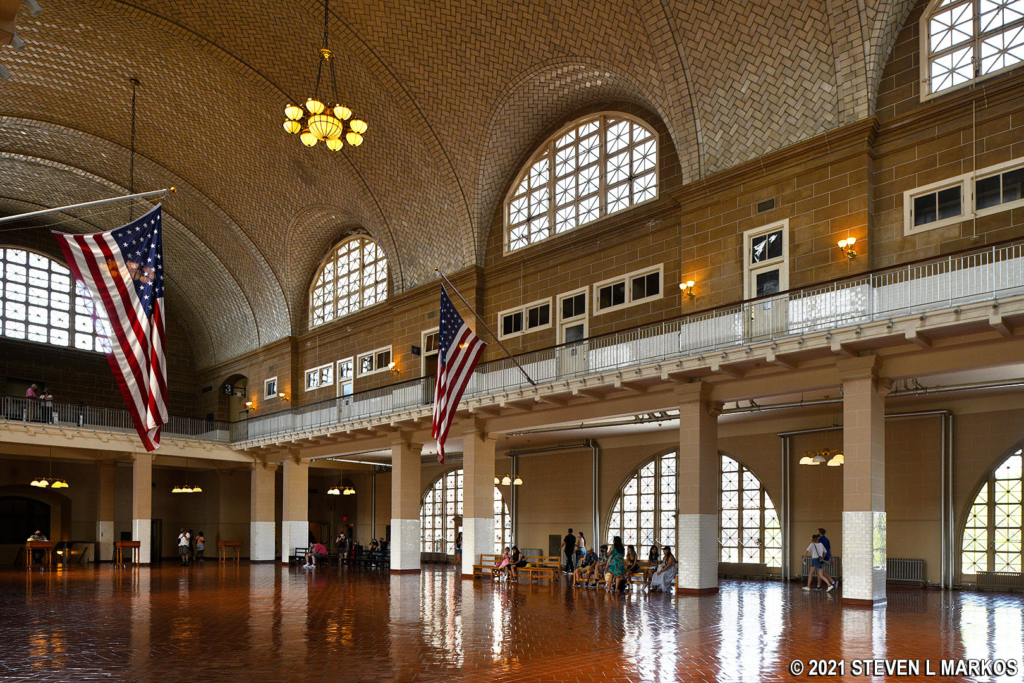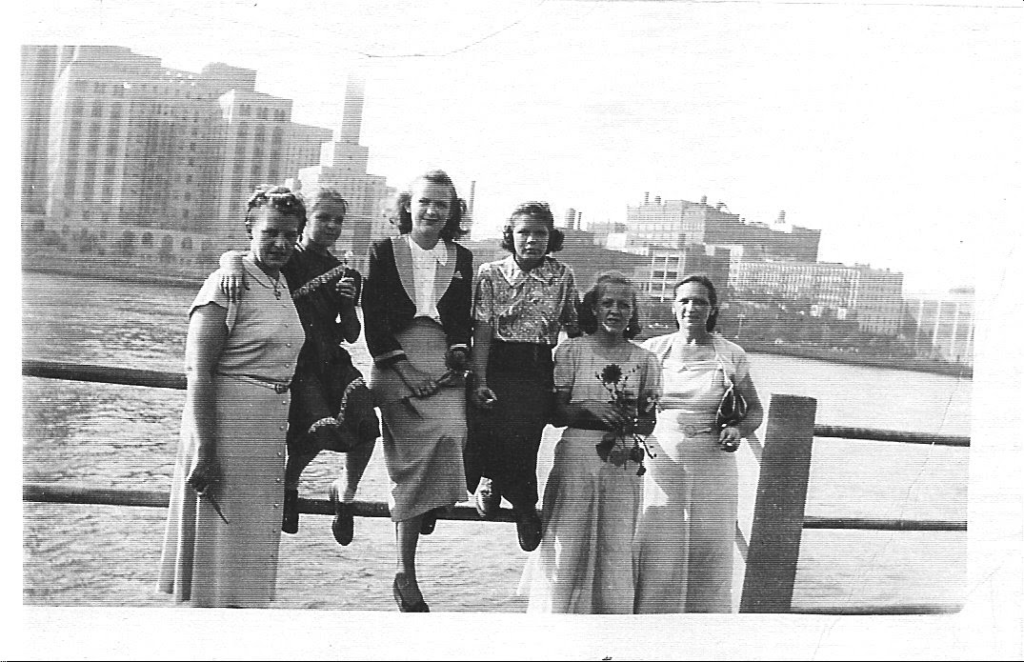Weekend, June 10-11, 2023 – SOME WONDERFUL TILE WORK THAT IS IN MANY N.Y. LANDMARKS


Are you interested in History & specifically OUR unique histories on Roosevelt Island?
Roosevelt Island Historical Society is looking for new Board Members to help us continue to serve the Roosevelt Island community.
We are regretfully losing two of our longtime Board members–one is moving and one is retiring. We are thankful for their years of service & will miss them both dearly.
We are also excited for this opportunity to meet new neighbors with diverse backgrounds to help move RIHS forward. If YOU are interested in history–and specifically Roosevelt Island’s unique and messy history–please contact us. We would value you as a Board Member to help keep Roosevelt Island’s history a LIVING history!
E-MAIL US AT: ROOSEVELTISLANDHISTORY@GMAIL.COM
FROM THE ARCHIVES
WEEKEND, JUNE 10-11, 2023
ISSUE# 1010
BEAUTIFUL LOCATIONS
TO FIND
GUASTAVINO TILES IN NYC
PART 1
UNTAPPED NEW YORK
We all know our visitor center probably has the smallest
Guastavino ceiling in New York. Here are some that are much larger and more grand.

| In 2014, the Museum of the City of New York housed an exhibition on the work of the Guastavinos, named “Palaces for the People: Guastavino and the Art of Structural Tile.” The retrospective called attention to many structures, including the Ellis Island Registry Room (The Great Hall), which used to be the first step in the U.S. immigration process for people who were waiting to be inspected by Immigration Service Officers.The room opened in 1900, and for over two decades, up to 5,000 immigrants passed through on a daily basis. Guastavino’s work, however, was not added until 1918. The Registry Room has since been restored to its appearance in 1918-24. |
 Located on the lower level of Grand Central Terminal, the Oyster Bar & Restaurant has been dishing out the freshest oysters and seafood dishes since 1913. Over a hundred years later, it remains a New York institution — famous not only for its seafood, but also for its adornment with Guastavino tiles. The tiles’ herringbone pattern takes center stage in this underground eatery, with lights running up and across the grand vaults.After dining, patrons can step outside the restaurant and into the next Guastavino tile location. Warning: this one is a little “hush, hush!” |
 Got a secret to tell? The acoustic pockets of the Guastavino-tiled vaults in the Grand Central Terminal‘s Whispering Gallery act as the perfect pathway for messages. Just stand with a partner at opposite diagonals of the base and talk into the arches. Whispers will be heard across the distance as if you and your partner were standing right next to each other.As we mention in our popular Secrets of Grand Central article, nobody knows whether this whispering gallery was built this way on purpose, but it has provided endless amusement for residents and tourists alike. |
 Sometimes the most surprising finds are in the most unassuming places, like a parking garage. On a visit to Grand Central Terminal, Untapped New York tour guide Justin Rivers noticed the famed arched herringbone pattern typical of Guastavino tile work. This area once part of The Biltmore Hotel, a grand Whitney Warren and Charles Wetmore-designed structure that was built as part of “Terminal City,” a compound of hotels and other buildings connected to Grand Central Terminal that was proposed in the original plans by Charles A. Reed and Allen H. Stem, along with William Wilgus.One of the hotel’s best amenities was the ease with which guests could come and go using the hotel’s connection to Grand Central Terminal. Guests of the Biltmore arriving at Grand Central Terminal would have their luggage collected from the train by porters and then they would travel via tunnel to an elevator in the hotel’s basement and be carried up into the hotel without ever having to step outside.The hotel was stripped down to its steel skeleton in the 1980s and all that is left of the original structure are small remnants like this passageway and its iconic golden clock, which can be found in the lobby of 335 Madison Avenue. |
 St. Paul’s Chapel, located on the Columbia University campus between Buell Hall and Avery Hall has Guastavino tiles on both the staircase and the dome. The staircase may have 2-3 layers of Guastavino tiles, whereas the dome may consist of as many as 5 or 6 layers of tiles. The tile work was commissioned as part of the master plan for the campus. A recently completed renovation has restored the church to its original glory. And on your visit, fun fact: there’s a secret coffee shop hidden below St. Paul’s Chapel too. |
 Don’t worry about conspicuously lingering about in this government building; there is no need to go inside to find Guastavino tiles. The south wing of the Municipal building on Chambers Street is fitted with a vaulted tile ceiling, though not in the characteristic herringbone pattern.The Manhattan Municipal Building was the first to incorporate a subway station in its base, and it’s regarded as one of the most beautiful stations in the city, featuring 11 columns. According to MCNY, Guastavino “devised a series of elegant vaults to cover the space, adapting to its various shapes three basic forms: the barrel vault, used along the length of the colonnades; lunettes, curving between the columns; and groin vaults, to accommodate the diversely shaped polygons spanning the internal columns.” Also, check out 12 other secrets of the Manhattan Municipal building, including how you can access the cupola on the top. |
 The event space, Guastavino’s (appropriately named after Rafael Sr. and Rafael Jr.), is one half of the Guastavino-tile vaulted space that sits beneath the Ed Koch Queensboro Bridge. Many people use the space, which is designated as a New York City landmark, as a place to host weddings, parties and other gatherings. You might have also recognized it as a film location for Marvel shows like The Defenders.The entire space used to be the Queensboro bridgemarket, filled with produce vendors year-round before the Great Depression. After an initial closure and re-opening in the late 1990’s, the space was converted into part Food Emporium, part event space. If you can’t get into Guastavino’s to see the tiling, there is a publicly accessible portion of the Queensboro Bridge, very much forgotten as a Department of Transportation storage area, that has more Guastavino tiling. |
MORE PHOTOS ON MONDAY
WEEKEND PHOTO OF THE DAY
SEND YOUR RESPONSE TO:
ROOSEVELTISLANDHISTORY@GMAIL.COM

FRIDAY PHOTO OF THE DAY
FAMILY OF REVEREND WARREN CROMEY
WHO LIVED IN CHAPEL OF THE GOOD SHEPHERD
IN THE 1950’s

Text by Judith Berdy
Thanks to Bobbie Slonevsky for her dedication to Blackwell’s Almanac and the RIHS
Thanks to Deborah Dorff for maintaining our website
Edited by Melanie Colter and Deborah Dorff
All image are copyrighted (c) Roosevelt Island Historical Society unless otherwise indicated
WIKIPEDIA
WIKIMEDIA COMMONS
THIS PUBLICATION FUNDED BY DISCRETIONARY FUNDS FROM CITY COUNCIL MEMBER JULIE MENIN & ROOSEVELT ISLAND OPERATING CORPORATION PUBLIC PURPOSE FUNDS.


Copyright © 2022 Roosevelt Island Historical Society, All rights reserved.Our mailing address is:
rooseveltislandhistory@gmail.com

Leave a comment